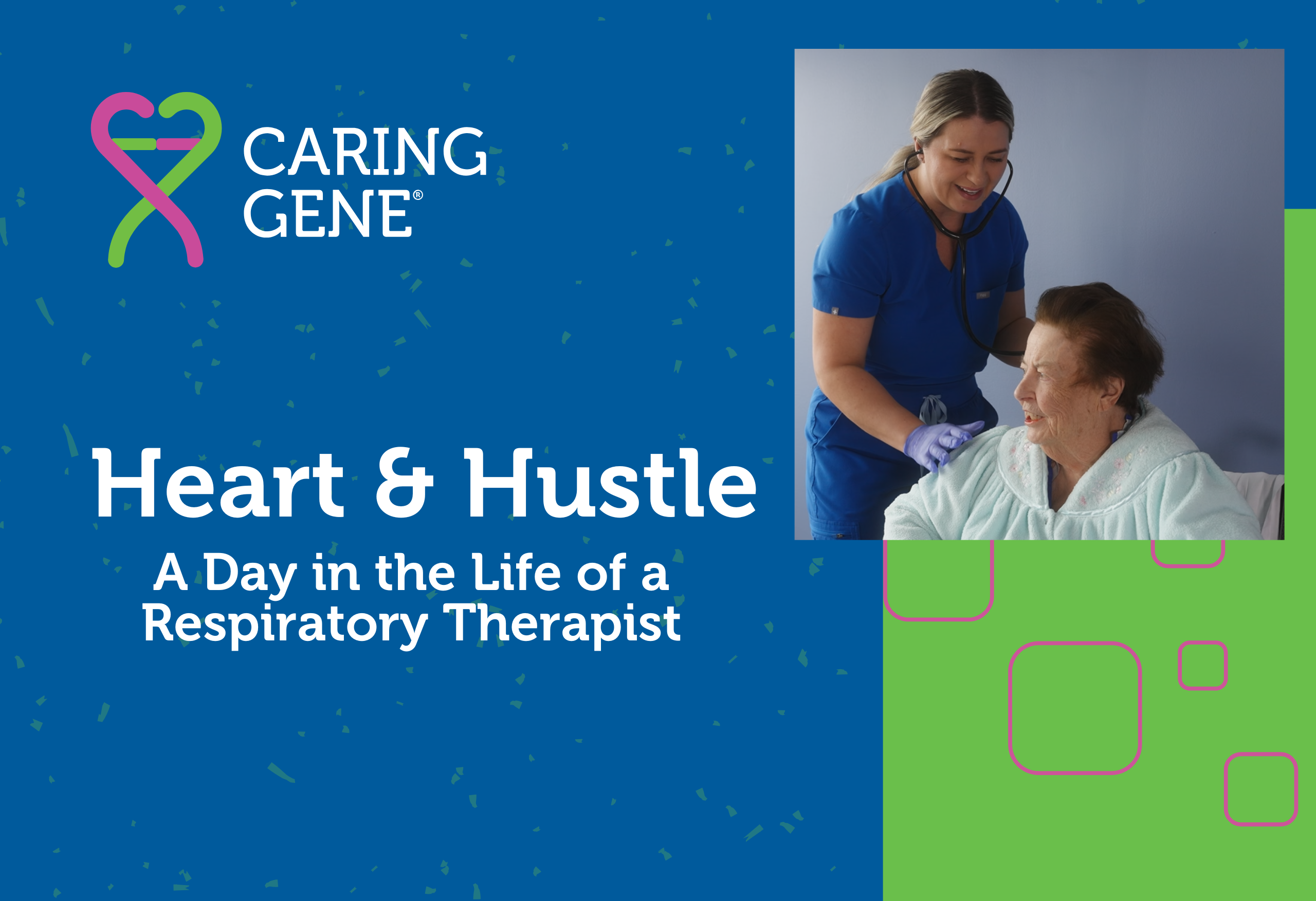
Heart & Hustle: A Day in the Life of a Respiratory Therapist
There’s a team of healthcare professionals in every patient’s story, a coalition of caregivers dedicated to providing the best possible outcome—including respiratory therapists (RTs), who move fast, think critically, and respond when the pressure’s on.
Whether it’s a newborn taking their first breath or an older patient trying to catch one, RTs solve problems and save lives in real time. It’s a path worth exploring for anyone interested in a career that makes an impact.
Just ask Elvisa Cerimovic. “In high school, I enrolled in a career shadowing program and explored different healthcare fields,” she recalls. “When I saw how respiratory therapists responded to emergencies and work across every floor of the hospital, I was hooked. They were always moving, always collaborating. It was exciting. I loved it.”
What do respiratory therapists actually do?
Respiratory therapists specialize in cardiopulmonary care, working with patients of all ages to treat conditions like asthma, COPD, pneumonia, and COVID-19. In essence, RTs help patients who struggle to breathe on their own.
“We provide mechanical ventilation, breathing treatments, and oxygen therapy, and respond to code blues,” Elvisa explains. “We’re there when every second counts.”
That means RTs are often on the front lines in emergencies, helping resuscitate patients or stabilize their breathing. The job is hands-on, technical, and highly collaborative. “We work closely with physicians, nurses, and other specialists,” she says. “Teamwork isn’t optional. It’s key to saving lives.”
And the work is never boring, because no two days are the same. In a hospital setting, RTs rotate between the ER, ICU, NICU, and outpatient clinics. There’s also the option to work in home healthcare, rehab centers, nursing homes and long-term care facilities, research labs—even in the medical tech world.
“It’s a career that grows with you,” Elvisa says. “Whether you want to lead, teach, or stay hands-on, the options are endless.”
What does it take to be a respiratory therapist?
To become a respiratory therapist, students must complete a two-year associate degree in respiratory care. After graduation, they must pass a national board exam to earn their Registered Respiratory Therapy (RRT) credential.
Compared to other specialties, respiratory therapy is a faster route into healthcare with lots of room to grow. Elvisa started at the patient bedside, but her hunger to lead and learn—to make a bigger impact—inspired her to go back to school.
“I earned my bachelor’s degree, and I’m in the process of finishing my master’s in healthcare administration,” Elvisa says. “I currently manage a respiratory care team of 74 people, supporting them so they can care for our patients.”
A Career That Changes Lives
At its core, respiratory therapy is about compassion. “To be great at this job, you need courage, resilience, and adaptability,” she explains, “but above all, you need heart.”
If you’re thinking about healthcare, Elvisa has a simple message: “Do it. It’s so rewarding. Your care, your compassion—it matters. You can change someone’s life every day.”
For students and change makers alike, respiratory therapy offers fast entry into the healthcare field, opportunities for growth, and work that is as impactful as it is inspiring.